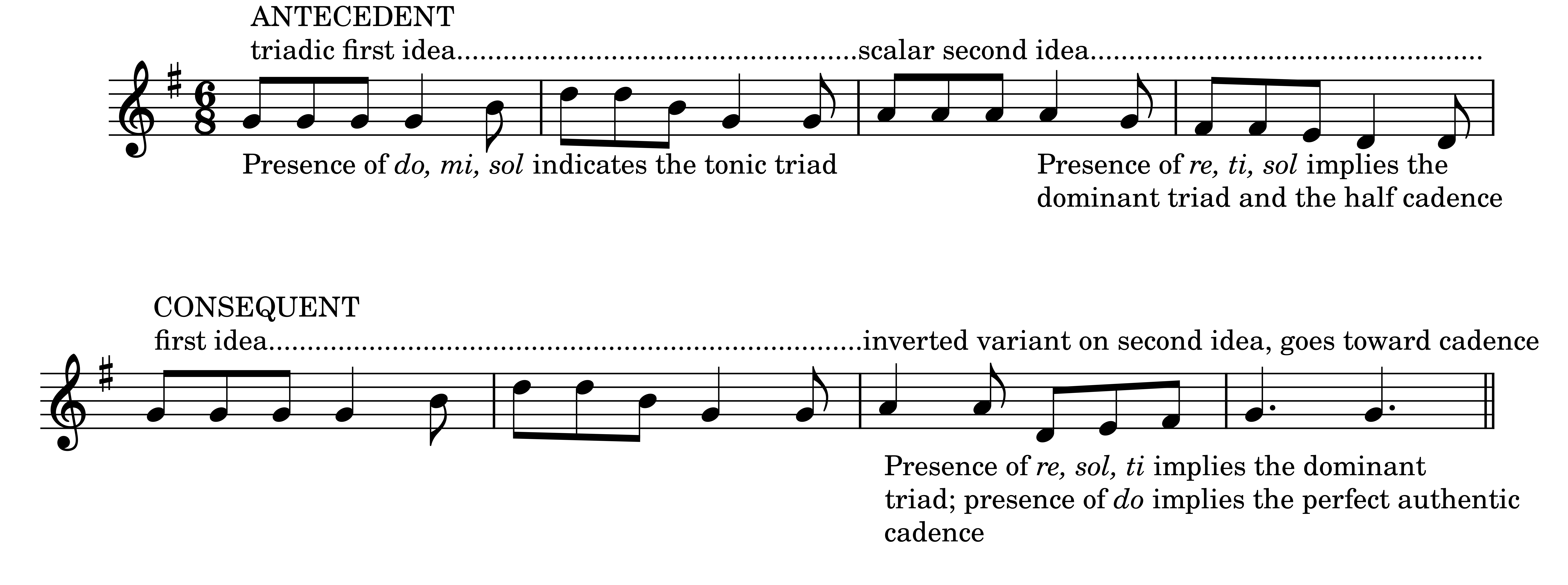Introduction to Dictation
14 Ear Training – Introduction to Melodic Dictation
Guidelines for Melodic Dictation
Melodic dictation can seem challenging at first, but it’s not as hard as it looks. Remember that a lot of music (in many genres and styles!) is both repetitive and predictable. This is because many types of music are pattern-based. If you are familiar with patterns, you know what to expect, and can make educated guesses even if you aren’t 100% sure of the answer.
Tips for Beginning Melodic Dictations
- Look for do, mi, and sol. In the early stages of melodic dictation, examples will contain tones from the tonic (I) triad: that is, do, mi, and/or sol, especially at the beginning of the phrase. You will usually find tones from the tonic triad at the end of the dictation too. Why? Because this is how a melody establishes a key and implies a cadence.
- Look for sol, ti, re, and (often) fa. Dictations are likely to outline tones from the dominant (V) triad, sol-ti-re. A variant of this chord is, of course, V7: sol-ti-re-fa. Commit the solfege of the dominant triad and dominant seventh chord to memory.
- Look for patterns. Most dictations are repetitive in some way. In both period structure and sentence structure, basic melodic ideas are often repeated, sometimes in fragments. Listen hard for things that “sound the same.” We can often predict what’s going to happen in a melody before we even hear it.
Before You Start a Dictation…
- Listen to the tonic triad.
- Sing up and down the scale of that key, using solfege.
- Sing up and down the tonic triad: “Do-mi-sol-mi-do.”
- On scratch paper, write down which tones correspond to the solfege syllables, i.e. in G major do-mi-sol will be G, B, and D. Remember these – they will be important to you when you have to do this quickly.
- Once you feel comfortable with the tonic triad, sing the dominant triad: “Sol-ti-re.” In G major, for example, the tones will be D, F-sharp, and A. Remember these – they will help you write down the right pitches.
Sample Melodic Dictations:
You may already know some nursery rhymes and folk songs well. Most well-known songs do all the repetitive, predictable things mentioned above.
- The nursery rhyme “Hot Cross Buns” has sentence structure. The mi-re-do scalar pattern establishes the key and the basic idea.

- Another children’s song, “Here We Go Round the Mulberry Bush,” has period structure. Its first idea is built around do, mi, and sol = the tonic triad. The second idea implies dominant harmony by using the tones of the dominant triad: sol, ti, and re. As expected, the antecedent ends with an implied half cadence. The consequent has an exact repeat of the first idea from measure one, but this time it varies the second idea and implies a perfect cadence at the end.

Developing Your Skills Further
In your own practice, think of some other well-known songs that fall into predictable melodic patterns. Try to write down a song you know well from memory. Then analyze it according to the principles in this chapter. Look for tones from the tonic and dominant triads, and for repetitive melodic patterns.
Some suggestions:
- “Itsy Bitsy Spider”
- “Old McDonald Had a Farm”
- “I Saw Three Ships”

